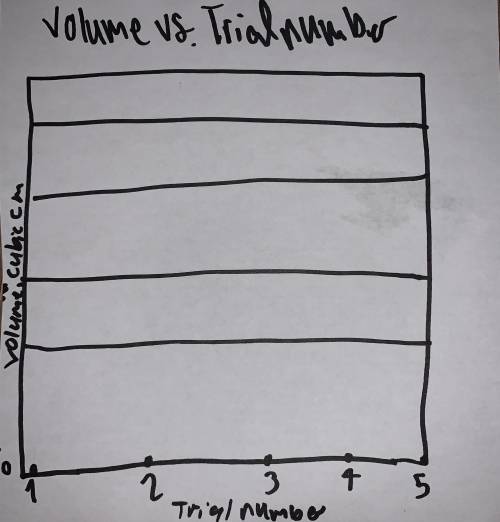1.3.3 Scientific Method Lab (Apex) Please Help!
(Procedure)
Scientific method question: What...

Biology, 13.10.2020 20:01 williamlindley2
1.3.3 Scientific Method Lab (Apex) Please Help!
(Procedure)
Scientific method question: What is the volume of air that my lungs hold?
1. Prepare the 100 cm x 2 cm strips of paper for later use.
2. Take one of the balloons and inflate it several times so you are sure you can inflate the balloon with only one breath.
3. Take a deep breath and inflate the balloon. Use the binder clip to hold the neck so no air escapes.
4. Make a measurement of the circumference of the balloon as follows: While holding the neck, wrap the paper strip around the balloon at its widest part and mark where the strip overlaps.
Figure 2
5. Let the air out of the balloon. Measure the length of the strip, up to where you made a mark in Step 4. This measurement is the circumference. Record it in Table 1.
6. Repeat the process outlined in Procedures 3-5 two more times.
7. Solve for the balloon volume using the equation below where:
volume = v
circumference = c
c^3 6π2
6π2
Record your answers in Table 1.
8. Find the average of the volumes and record it in the Table.
9. Plot the volume as a function of trial number in the graph area provided.
Questions for Scientific Method
Table 1
Circumference
Trial #1 58.42 cm
Trial #2 54.61 cm
Trial #3 50.8 cm
Volume
Trial #1 3366.92
Trial #2 2750.20
Trial #3 2213.80
Average 2776.10
Fill out the graph.
Answer questions.
(Graph questions)
1. Look at the volume values. Are the volume values larger or smaller than you expected? Explain your answer.
2. Are the volume values similar to each other, or are they quite different? Explain why you see what you see. If they are similar, explain why. If they are different, also explain why.
3. Does the volume increase with trial number, decrease with trial number, or stay about the same? Explain why you think the results are the way there are. There are many possible reasons for the data trend you see. Give some that you think are reasonable.
4. This method of measuring the volume of your lungs is probably not completely accurate. What changes would you make if you did this type of experiment to make it more accurate?
5. How would you modify the hypothesis and repeat the experiment for improved or more complete results?


Answers: 3


Other questions on the subject: Biology

Biology, 22.06.2019 05:00, jxcxhxwxll
The chemical form of energy that is useable by the cell to do work
Answers: 2

Biology, 22.06.2019 14:30, reinajoy
Which of these is not an example of molecular homology? 1. use of dna and rna as genetic material 2.use of glycolysis as the first step in cellular respiration in both plants and animals 3. the lack of an igf-1 gene in prokaryotes 4. the use of aldolase b to break down fructose in bacteria, plants and animals
Answers: 3

Biology, 22.06.2019 15:20, DotDotTaterTot
What two factors does carrying capacity compare? population size and resource use population growth and resource availability resource use and time population size and time
Answers: 2

Biology, 22.06.2019 19:30, gungamer720
When it is summer at the south pole, a. the northern hemisphere is tilted toward the sun. b. the southern hemisphere is tilted away from the sun. c. the northern hemisphere is tilted away from the sun. d. both the southern and northern hemispheres are tilted toward the sun.
Answers: 1
You know the right answer?
Questions in other subjects:

Mathematics, 16.09.2020 21:01

Mathematics, 16.09.2020 21:01

Mathematics, 16.09.2020 21:01

Social Studies, 16.09.2020 21:01

Mathematics, 16.09.2020 21:01

Mathematics, 16.09.2020 21:01

Mathematics, 16.09.2020 21:01

Mathematics, 16.09.2020 21:01

Mathematics, 16.09.2020 21:01

Mathematics, 16.09.2020 21:01



